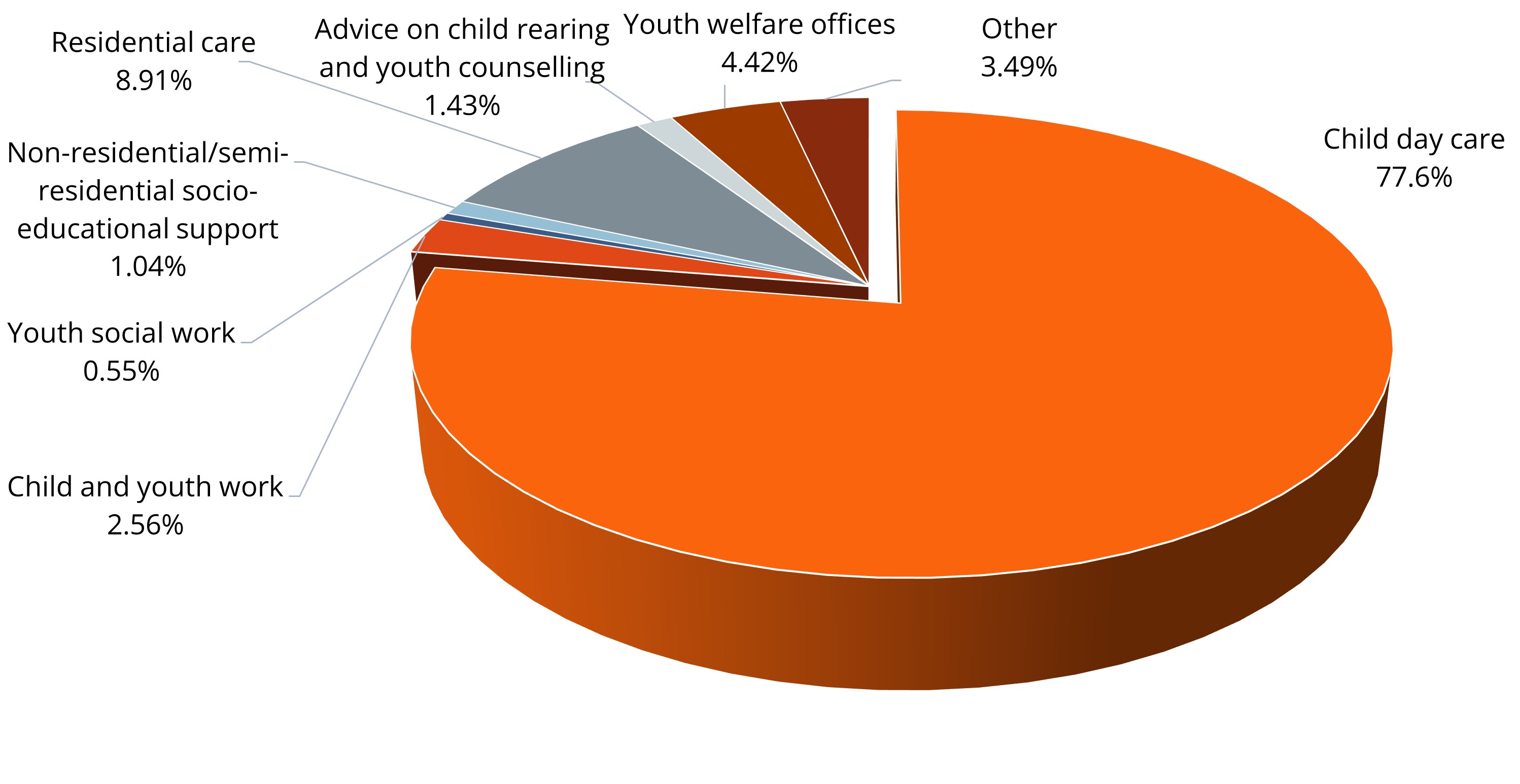Structures > Employees
Fields of work of child and youth services professionals
In 2018/2019 there were almost 1.1 million people working in the field of child and youth services, or 2.4% of all gainfully employed persons in Germany.

Source: Statistisches Bundesamt: Statistiken der Kinder- und Jugendhilfe – Einrichtungen und tätige Personen (31 December 2020); Kinder und tätige Personen in Tageseinrichtungen und in öffentlich geförderter Kindertagespflege (1 March 2022); own calculations
Notes
In 2022 there were 1.3 million people working in the field of child and youth services in Germany. This puts the headcount higher than in several other major German industries, including the agriculture and auto industries. For comparison: in 2021 agricultural businesses employed a total of 938,000 workers. Around 1,251,000 people were recorded as working in the "manufacture of motor vehicles, trailers and semi-trailers" sector in 2021. The high relevance of child and youth services goes back to its extremely dynamic development ever since the mid-2000s.
Most employees working in education or administration (77.6%) form part of the child day-care field (child day-care centres and nurseries). This field has also largely driven the Germany-wide increase in staffing in recent years, mainly due to concerted efforts to expand day-care places for the under-threes and to extend all-day programmes in child day-care centres, but also as a result of positive changes to child-teacher ratios and the unexpectedly strong demographic growth in the target group for these services through rising birth rates and immigration. Here alone, the number of employees nationwide has risen almost linearly by just under 300,000 (+75%) since 2007.
Other major fields of work, which include, inter alia, socio-educational support services or the general social services, have also contributed to this growth spike with a total increase of around 84,000 employees since 2006 (+50%). However, growth is not ubiquitous across all areas of child and youth services: for example, the number of people working in child and youth work fell overall by around 5% between 2006 and 2018.
Further reading
- Böwing-Schmalenbrock, Melanie/Sempf. Frederieke (2020): Gehen mit dem enormen Personalwachstum in Kindertageseinrichtungen bessere Personalschlüssel einher? In: KomDat Jugendhilfe, issue 1, p. 22–23 (last accessed: 31 July 2023).
- Statistisches Bundesamt (2022): Statistiken der Kinder- und Jugendhilfe – Einrichtungen und tätige Personen (ohne Tageseinrichtungen für Kinder) 2020 (last accessed: 1 July 2023).
- Statistisches Bundesamt (2022): Statistiken der Kinder- und Jugendhilfe – Kinder und tätige Personen in Tageseinrichtungen und in öffentlich geförderter Kindertagespflege as at 1 March 2022 (last accessed: 1 July 2023).


